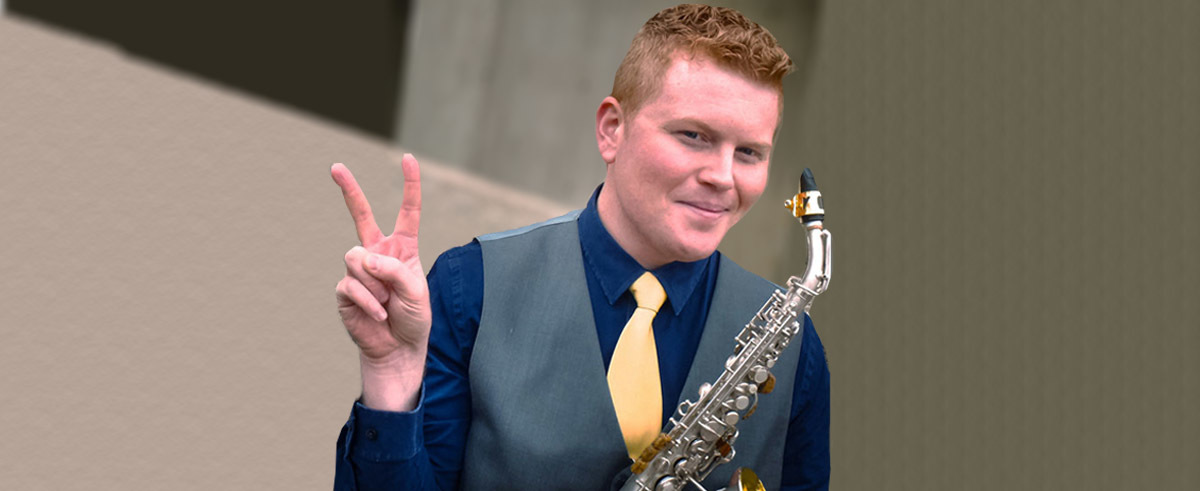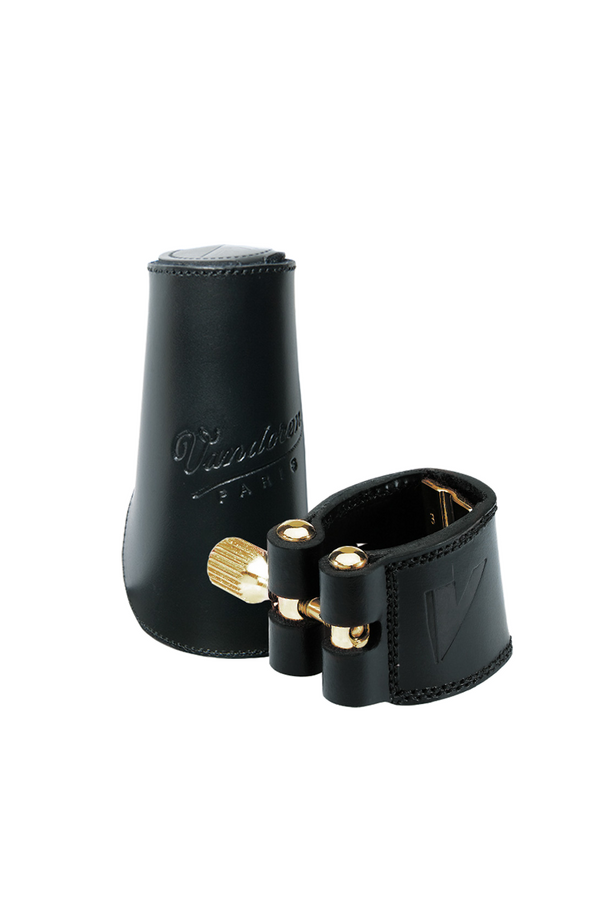Learning About the Curved Soprano Saxophone
with Saxophonist Jacob Swanson
Date Posted: May 19, 2016

Jacob Swanson is a Regional Artist. The goal for the Vandoren Regional Artist program is to enhance the quality of the music experience through education and the assistance of Vandoren. To learn more about how you can request a free clinic, please visit the Regional Artists' page.
Why a curved soprano saxophone instead of the straight soprano?
My former teachers, Dr. Wildy Zumwalt and Carina Raschèr, both use curved instruments. My teachers were extremely inspiring and I copied them in every way possible. This made playing the curved soprano a natural decision. For those interested, my instrument is a 1936 Buescher Aristocrat.
For me, I have found benefits to using a curved soprano. The soprano saxophone is a rather heavy instrument. Straight soprano saxophones can especially leave the player susceptible to tendonitis and general hand fatigue - particularly in the right hand. A curved soprano is held a little closer to the body and the neck strap supports the weight better than the support on straight instruments; this makes the instrument less fatiguing on the hands and wrists. To my ears, my curved soprano saxophone offers a wider tone color variety than the straight sopranos I have played – a bit more flexibility. I find this to be most apparent in the lowest range of the instrument.

Tone Production
The saxophone is a very vocal instrument and the soprano saxophone, specifically, is extremely flexible. The soprano’s flexibility allows for nearly endless possibility regarding tone production. So many artists have found their voice with this instrument. I like to use a warm round tone as “home base” and brighten or darken the quality (using voicing) as contextually appropriate.
The flexibility of the soprano saxophone makes the pitch precarious. To play in tune one needs both an appropriate set up and a commitment to developing their abilities. The mouthpiece must fit your sound concept and not require too much “biting”. Having a comfortable facing on your mouthpiece is absolutely essential. A quality, consistent, and comfortable reed of the appropriate strength is also critical. Reeds should be broken-in to play their best and a reed that has become too old, thin, and worn out will play out of tune.
If the saxophone is properly regulated and the mouthpiece, reed and ligature combination is working - one is halfway there! Ear training, voicing practice, overtones, tone imagination, and cultivation of the inner ear are absolutely essential for the saxophonist. It is only through thoughtful practice of these concepts that the saxophonist can begin to play in tune consistently.
"Ear training, voicing practice, overtones,
tone imagination, and cultivation of the inner ear are
absolutely essential for the saxophonist."
The Embouchure
The embouchure is the same as for other saxophones but the mouthpiece is much smaller, which causes the stabilizing muscles to work harder. The player needs to play on a comfortable mouthpiece (one that helps create the desired tone and tuning without over manipulation) or stamina will be compromised. A player will have a difficult time performing with controlled intonation and tone for long periods of time if the embouchure is strained.
When choosing equipment to assist in achieving a particular sound concept, the saxophonist must consider reed strength, mouthpiece facing and chamber shape. A quality ligature is one that evenly presses the reed against the table of the mouthpiece. This is also necessary to perform consistently. When a good equipment setup is complimented with the quality exercises, the saxophonist's embouchure will be strengthened and their ability to play in tune for long stretches of time will increase.
In Conclusion…
- Consider a curved soprano saxophone if you like the feel of a saxophone close to your body. Jacobs says the straight soprano users may be more susceptible to fatigue and tendonitis.
- Soprano saxophone is known for its unstable pitch at the beginning. Find an appropriate setup early.
- Comfortable facing, quality reed, appropriate strength and an even pressing ligature are essential components. Jacob Swanson uses the Vandoren Leather Ligature
- Remember: the mouthpiece is much smaller and requires a bit of extra care and attention to building those muscles. Intonation and tone production will be sacrificed with a strained embouchure.
Here's a short list of some of the new instrument manufacturers who make curved sopranos. There are many used and vintage models out there. Happy Hunting!
- P. Mauriat
- Yanagisawa
Subscribe to the We Are Vandoren E-newsletter (WAVE) to receive 4 weekly articles for Performers, Students, and Educators